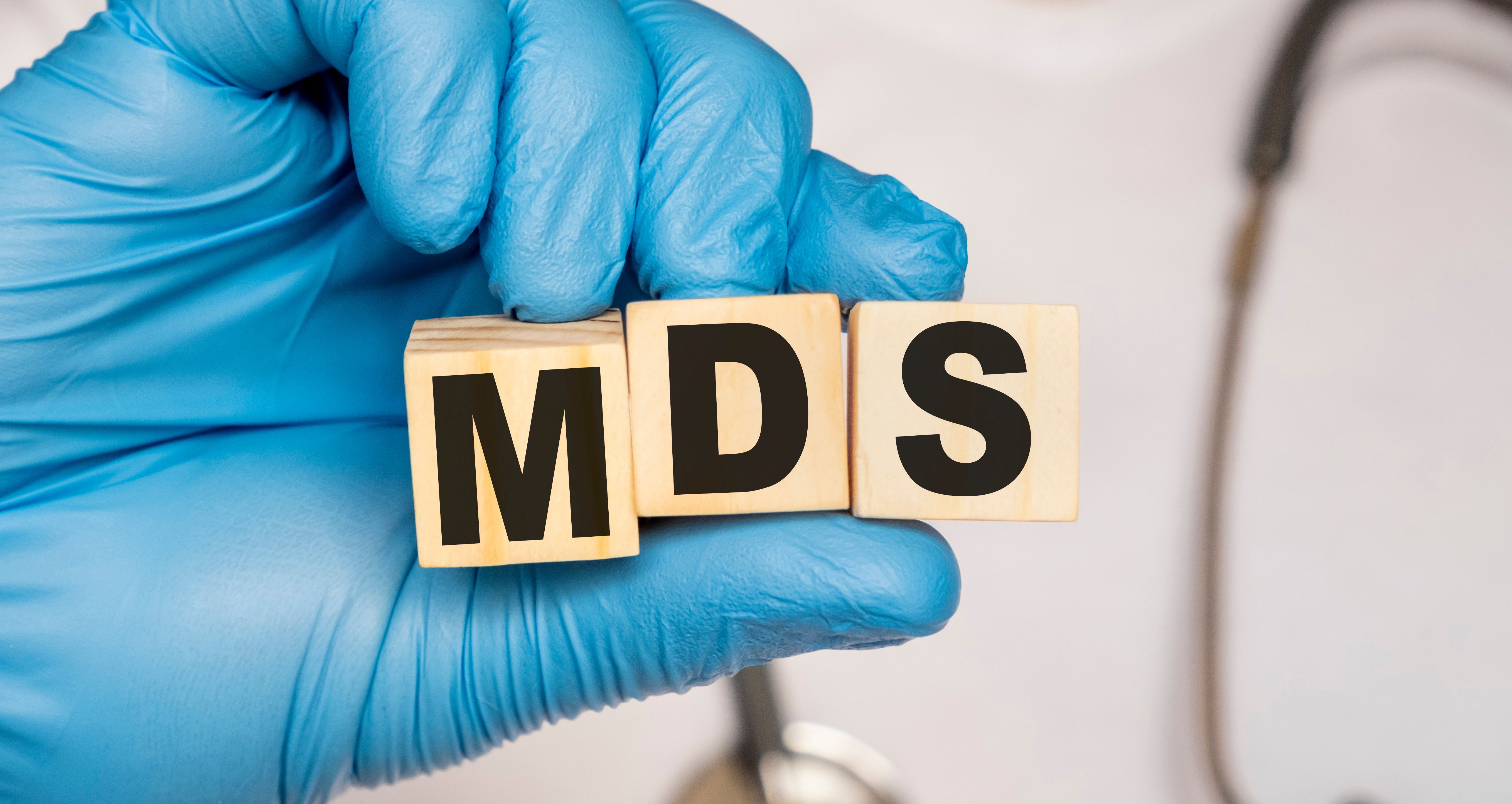Publication
Article
The American Journal of Managed Care
Clinical Profile of COVID-19 Infection in Postvaccination Individuals
Author(s):
This article describes the findings of an observational study carried out in India to examine the clinical profile of individuals detected to be COVID-19 positive post vaccination.
ABSTRACT
Objectives: Covishield and Covaxin vaccines have been introduced after rapid approval in India, the nation that has the second most COVID-19 cases globally. These vaccines have been administered in a 2-dose schedule since January 16, 2021. This study deals with the clinical profile of individuals who developed COVID-19 infection post COVID-19 vaccination. This is the first study of its kind in India.
Study Design: Descriptive cross-sectional study.
Methods: The study population was composed of individuals who were COVID-19 positive more than 4 weeks post vaccination and were compared with individuals who were COVID-19 positive within the first 4 weeks of vaccination. Data were collected in a digital questionnaire format and analyzed with SPSS version 23 software. Clinical features were profiled in detail. Chi-square analysis was done to find out the association of various demographic features with the severity of the disease.
Results: In the study population, fever was the most common symptom (75.1%), followed by anosmia (72.1%) and shortness of breath (16.3%). There was a lower incidence of fever, cough, dyspnea, and requirement of hospitalization in the study population compared with the control group and previous epidemiological data. The time required for complete recovery and disease severity was favorable in our study population. There was a significant correlation in the rate of hospitalization among the study group and the comparative group (P = .0001) and between the number of doses of COVID-19 vaccine and the lowest oxygen saturation recorded (P = .001).
Conclusions: The findings of this study should boost the ongoing initiative of maximizing the vaccinated population countrywide and emphasize the need for 2 doses of vaccination.
Am J Manag Care. 2022;28(7):e244-e247. https://doi.org/10.37765/ajmc.2022.89182
Takeaway Points
- This is the first study conducted among individuals who were detected to be COVID-19 positive after vaccination in India, the world’s second most populous country, which accounts for about 16.6% of cases globally.
- This study highlights the importance of vaccination as it shows favorable clinical outcomes in terms of fever, cough, shortness of breath, and lowest oxygen saturation recorded among vaccinated individuals.
- There was also a significant reduction in the requirement of hospitalization among vaccinated individuals.
- The study shows 50% higher chances of having mild disease after 2 doses of vaccination compared with after a single dose.
COVID-19, caused by SARS-CoV-2, was declared a pandemic on March 11, 2020, by the World Health Organization.1 The pandemic not only inflicted mortality and morbidity across the human race but also crippled the economies of affected nations. The imperative to control this disease has encouraged vaccine research worldwide. The severe second and third waves of infections made health experts around the world realize that rapid vaccination of as many individuals as possible with an effective vaccine is the only lasting solution.
Vaccination against the disease was launched in India on January 16, 2021, with health care workers, frontline workers, and those 60 years and older receiving the first doses. As of September 17, 2021, 7 vaccines had been approved for use in India: Covishield, Covaxin, Moderna, Gamaleya Sputnik, Johnson & Johnson, ZyCoV-D, and AZD1222. The Covishield vaccine is a viral vector vaccine developed by the Serum Institute of India in line with the vaccine developed in the United Kingdom by the Jenner Institute at the University of Oxford. Covaxin is an inactivated virus vaccine that was developed by Bharat Biotech in collaboration with the Indian Council of Medical Research.2
During the early stages of vaccination, there were public concerns about the safety and efficacy of the vaccines. This was mainly due to the rapid approvals of their usage.3,4 Subsequently, several scientific publications have validated the safety of these vaccines.5
The efficacy as determined by seroconversion after the first and second doses of Covishield is 91% and 100%, respectively, and that of Covaxin is 98.3% at 56 days post vaccination.6,7
Various studies have also shown that vaccination confers immunity and prevents progression to severe disease. In this study, we have highlighted the clinical profile of patients who were detected to be COVID-19 positive post vaccination. To the best of our knowledge, this is the first paper on the analysis of the clinical profile of COVID-19 in postvaccination individuals in India.
MATERIALS AND METHODS
This descriptive observational study was conducted in individuals under the area of responsibility of a tertiary care center in northern India to study the clinical profile of patients with COVID-19 infection and various factors associated with severity of disease post COVID-19 vaccination. All COVID-19–positive patients who developed COVID-19 at least 4 weeks after the first vaccination were eligible for enrollment. All patients were adults (≥ 18 years). Informed consent was taken from all. The participants were administered a questionnaire via digital means during April to May 2021. The questionnaire was administered to participants on day 7 of home isolation or admission as applicable. Data of all the beneficiaries were compiled and collated in an Excel sheet (Microsoft) and were analyzed after data cleaning using SPSS version 23 (IBM).
This is the first study in an Indian population highlighting clinical features in COVID-19–positive individuals post vaccination to the best of our knowledge. Those with symptomatic COVID-19 infection were defined as COVID-19–positive individuals with fever, cough, malaise, diarrhea, or other symptoms consistent with COVID-19 infection; however, individuals who tested positive for COVID-19 via rapid antigen test/reverse transcription polymerase chain reaction were also considered COVID-19–positive patients. The lowest oxygen saturation (SpO2) recorded on pulse oximeter by the study participants was used as a surrogate marker to assess the severity of the disease. Mild disease was present if the lowest SpO2 recorded by the study participant was 94% or greater; moderate disease, 90% to 93%; and severe disease, below 90%.8 For this study, postvaccination COVID-19 infection was defined as a confirmed COVID-19–positive case in an individual who had taken at least 1 dose of Covishield or Covaxin 4 weeks before COVID-19 infection. This time cutoff was chosen because the time needed for seroconversion after COVID-19 vaccination is approximately 4 weeks.6,7 The participants who developed COVID-19 within less than 4 weeks after the first dose of vaccination were enrolled in the comparative arm of the study, whereas those who developed COVID-19 at least 4 weeks after the first dose of vaccination were enrolled in the study arm.
The patients were admitted to the hospital based on their clinical profile. All India Institute of Medical Sciences (AIIMS) COVID-19 protocol was followed to determine hospital admission of COVID-19–positive individuals. Patients with moderate to severe disease were admitted as per AIIMS protocol. Individuals with underlying uncontrolled medical conditions such as diabetes, hypertension, or lung, liver, or kidney disease; patients with cancer on chemotherapy; smokers; transplant recipients; and patients taking steroids chronically are at increased risk of COVID-19 infection and were considered to have comorbid conditions for COVID-19 infections for this study.
Statistical Analysis
Descriptive statistics (frequency and percentages) were calculated for sample demographic characteristics and clinical features of the participants. Chi-square analysis was done to find out the association of various demographic features with the severity of disease among the study participants. The data of individuals with COVID-19 infection following a single dose and 2 doses of COVID-19 vaccination were analyzed separately and interpreted. Binary logistic regression was done for variables that were found to have a statistically significant association with the outcome of interest.
RESULTS
There were 168 participants in the study group and 42 participants in the comparative group; their mean (SD) ages were 37.18 (9.38) years and 40.36 (11.27) years, respectively. The study population included 140 (83.3%) men and 28 (16.7%) women in the study group and 31 (73.8%) men and 11 (26.2%) women in the comparative group. The study population was divided into 5 age-based subgroups. In the study group, 33 (19.6%) of the participants had at least 1 comorbid condition vs 16 (38.1%) in the comparative group. Demographic features of the entire study population are given in Table 1.
In the study group, 162 (96.4%) of the participants received Covishield vs 40 (95.2%) in the comparative group. One hundred and fifty-eight (94.0%) participants in the study population received both doses of the vaccine. Vaccination details of the study population are given in Table 2.
Of the study population, 129 (76.8%) of the study participants had symptomatic COVID-19 infection and 29 (17.3%) required hospitalization. Twenty-nine (69.0%) of the comparative group were symptomatic for COVID-19 infection and 20 (47.6%) of them required hospitalization. Among the symptomaticstudy group participants who had received vaccination a minimum of 4 weeks prior to the infection, fever was the predominant symptom (n = 97; 75.2%) followed by loss of smell/taste and cough. A similar trend was observed among the comparative group. A significant association was found for shortness of breath and the lowest SpO2 recorded among participants when compared in both arms. Clinical features of the study population and comparative group with symptomatic COVID-19 infection are given in the eAppendix Table (available at ajmc.com).
The χ2 test was used to find out the association of various demographic features with the outcome of interest among the study participants. It was found that the number of doses of the COVID-19 vaccine had a significant association with the lowest SpO2 recorded among the study participants (Table 3). It was also found that the number of doses of COVID-19 vaccine had a significant association with lower rate of hospitalization among study population (Table 4).
Binary logistic regression was further applied to the variables that had a significant association with the outcome of interest. There was a significant correlation between the number of doses of COVID-19 vaccine with the severity of disease, with higher odds of having mild infection after both doses of the vaccine among the study group by 1.5 times that after a single dose (P = .05) (Table 5).
DISCUSSION
Initial epidemiological data in a general unvaccinated populationshow that COVID-19 disease presents as mild cases in 81%, severe cases in 14%, and critical cases in 5%. It is also associated with a mortality rate of approximately 2.5%.9 In addition, clustering of cases in a limited geographical area over a short time overwhelms health care facilities. Mass vaccination is considered the only viable strategy to mitigate viral pandemics. This descriptive study demonstrates the clinical profile of individuals developing COVID-19 infection post vaccination.
Our study population was relatively young, with a mean (SD) age of 37.18 (9.38) years, which is comparable with the comparative population. The proportion of individuals with comorbid conditions is comparable with the general population.10 With the second wave of COVID-19 affecting the younger population, our study population can be considered as a suitable representation of the general population.11 Most of our study population (96.4%) received Covishield, with 94.0% of the study population having taken both doses of vaccination. As the participants did not have a choice as to which vaccine they could take, interpretation on the choice of the vaccine was not done.
Fever was the most predominant symptom, followed by loss of smell/taste; these symptoms were observed in 75.2% and 72.1% of the study population, respectively. In a 2020 meta-analysis done by Li et al, fever was seen in 88.5%, cough in 68.6%, dyspnea in 21.9%, and gastrointestinal symptoms in 8.7% of symptomatic individuals.9 There was a lower incidence of fever, cough, and shortness of breath in our study population compared with both the comparative group and the study by Li et al. However, the study by Li et al was a meta-analysis of the clinical profile of patients with COVID-19 conducted prior to vaccine availability and did not focus on postvaccination COVID-19.
The clinical profile of postvaccination COVID-19 was that of a short febrile illness, with 71.1% of the febrile patients having fever for fewer than 5 days. In a study on the clinical profile of COVID-19 infection in the nonvaccinated population, Sharma et al found the median duration of fever to be 12 days.12 The duration of fever is considerably lower among our vaccinated participants. As per our SpO2-based severity classification, 88.4% had mild, 10.1% had moderate, and 1.6% had severe disease. Saturation below 80%, indicating critical disease, was not recorded in any of our participants. In the study by Li et al of nonvaccinated patients with COVID-19, 14% had severe disease and 5% had critical disease.9 Vaccination thus seems to mitigate critical and severe disease.
The duration for complete recovery in our study as shown in the results is considerably faster than that shown in the data published by Barman et al, in which fewer than 4% of the patients had recovered in 10 days and 50% of the patients required 25 days to recover fully.13
There was a significant association (P = .0001) with a decreased rate of hospitalization among the study population compared with the comparative group. This rate is much lower than the mean rate of hospitalization required for COVID-19 among unvaccinated individuals.14
There was a significant correlation between the number of doses of the COVID vaccine and the lowest SpO2 recorded (P = .001), as the odds of having mild infection after both doses of the vaccine among the study group were 1.5 times greater than after a single dose (P = .05). Despite an extensive search, we could not find any published study analyzing similar data. This translates into a better outcome of COVID-19 with 2 doses of vaccine.
CONCLUSIONS
This study on postvaccination COVID-19 infection in India shows 50% lower chances of having a moderate/severe infection after 2 doses of vaccination compared with a single dose. These benefits of vaccination should be a guiding light for governments, health systems, and global health organizations to continue striving to vaccinate most of the population quickly.
Author Affiliations: 7 Air Force Hospital (VKS, KRK, SSM, NB, DM), Kanpur, India; HQ 17 Mountain Division (AN), Gangtok, India.
Source of Funding: None.
Author Disclosures: The authors report no relationship or financial interest with any entity that would pose a conflict of interest with the subject matter of this article.
Authorship Information: Concept and design (VKS, KRK, AN, SSM, DM); acquisition of data (VKS, KRK, SSM, NB, DM); analysis and interpretation of data (VKS, KRK, AN, SSM); drafting of the manuscript (VKS, KRK, AN, SSM, NB); critical revision of the manuscript for important intellectual content (KRK, AN, SSM, DM); statistical analysis (VKS, AN, SSM, NB); provision of patients or study materials (VKS, KRK, SSM); obtaining funding (VKS, SSM); administrative, technical, or logistic support (VKS, AN, NB, DM); and supervision (AN, SSM, NB).
Address Correspondence to: Sourya Sourabh Mohakuda, MD, Department of Internal Medicine, 7 Air Force Hospital, Nathu Singh Rd, Kanpur, India 208001. Email: souryasourabh@gmail.com.
REFERENCES
1. Agrawal S, Goel AD, Gupta N. Emerging prophylaxis strategies against COVID-19. Monaldi Arch Chest Dis. 2020;90(1). doi:10.4081/monaldi.2020.1289
2. Sharma O, Sultan AA, Ding H, Triggle CR. A review of the progress and challenges of developing a vaccine for COVID-19. Front Immunol. 2020;11:585354. doi:10.3389/fimmu.2020.585354
3. Palamenghi L, Barello S, Boccia S, Graffigna G. Mistrust in biomedical research and vaccine hesitancy: the forefront challenge in the battle against COVID-19 in Italy. Eur J Epidemiol. 2020;35(8):785-788. doi:10.1007/s10654-020-00675-8
4. Lin Y, Hu Z, Zhao Q, Alias H, Danaee M, Wong LP. Understanding COVID-19 vaccine demand and hesitancy: a nationwide online survey in China. PLoS Negl Trop Dis. 2020;14(12):e0008961. doi:10.1371/journal.pntd.0008961
5. Mohakuda SS, Nigam A, Rajesh K, et al. Covishield India: demystifying myths through an early multicenter safety study. Am J Manag Care. 2021;27(10):e339-e342. doi:10.37765/ajmc.2021.88694
6. Folegatti PM, Ewer KJ, Aley PK, et al; Oxford COVID Vaccine Trial Group. Safety and immunogenicity of the ChAdOx1 nCoV-19 vaccine against SARS-CoV-2: a preliminary report of a phase 1/2, single-blind, randomised controlled trial. Lancet. 2020;396(10249):467-478. doi:10.1016/S0140-6736(20)31604-4
7. Ella R, Reddy S, Jogdand H, et al. Safety and immunogenicity of an inactivated SARS-CoV-2 vaccine, BBV152: interim results from a double-blind, randomised, multicentre, phase 2 trial, and 3-month follow-up of a double-blind, randomised phase 1 trial. Lancet Infect Dis. 2021;21(7):950-961. doi:10.1016/S1473-3099(21)00070-0
8. Clinical guidance for management of adult COVID-19 patients. Indian Council of Medical Research. May 17, 2021. Accessed September 23, 2021. https://web.archive.org/web/20220107001421/https://www.icmr.gov.in/pdf/covid/techdoc/COVID_Management_Algorithm_17052021.pdf
9. Li LQ, Huang T, Wang YQ, et al. COVID-19 patients’ clinical characteristics, discharge rate, and fatality rate of meta-analysis. J Med Virol. 2020;92(6):577-583. doi:10.1002/jmv.25757
10. Boutayeb A, Boutayeb S. The burden of non communicable diseases in developing countries. Int J Equity Health. 2005;4(1):2. doi:10.1186/1475-9276-4-2
11. Palmieri L, Palmer K, Lo Noce C, et al; Italian National Institute of Health COVID-19 Mortality Group. Differences in the clinical characteristics of COVID-19 patients who died in hospital during different phases of the pandemic: national data from Italy. Aging Clin Exp Res. 2021;33(1):193-199. doi:10.1007/s40520-020-01764-0
12. Sharma R, Agarwal M, Gupta M, Somendra S, Saxena SK. Clinical characteristics and differential clinical diagnosis of novel coronavirus disease 2019 (COVID-19). In: Saxena SK, ed. Coronavirus Disease 2019 (COVID-19): Epidemiology, Pathogenesis, Diagnosis, and Therapeutics. Springer; 2020:55-70. doi:10.1007/978-981-15-4814-7_6
13. Barman MP, Rahman T, Bora K, Borgohain C. COVID-19 pandemic and its recovery time of patients in India: a pilot study. Diabetes Metab Syndr. 2020;14(5):1205-1211. doi:10.1016/j.dsx.2020.07.004
14. Garg S, Kim L, Whitaker M, et al. Hospitalization rates and characteristics of patients hospitalized with laboratory-confirmed coronavirus disease 2019 — COVID-NET, 14 states, March 1-30, 2020. MMWR Morb Mortal Wkly Rep. 2020;69(15):458-464. doi:10.15585/mmwr.mm6915e







